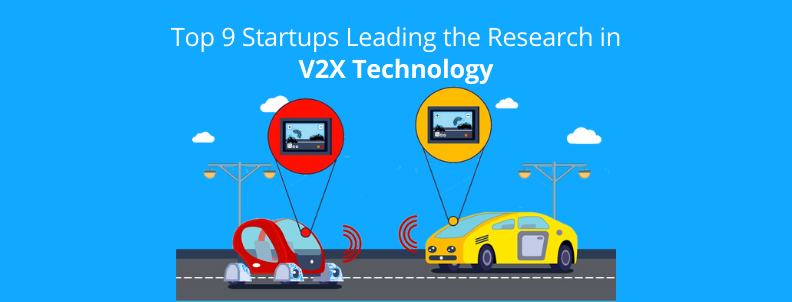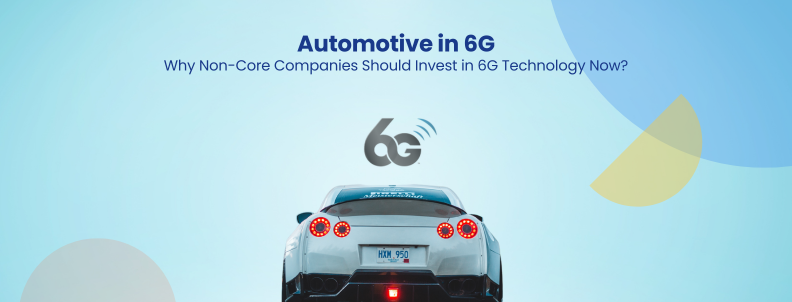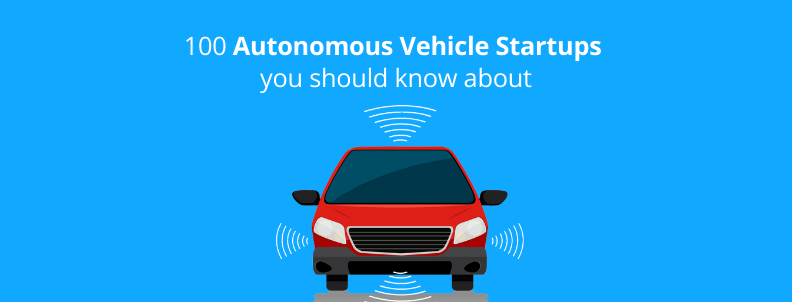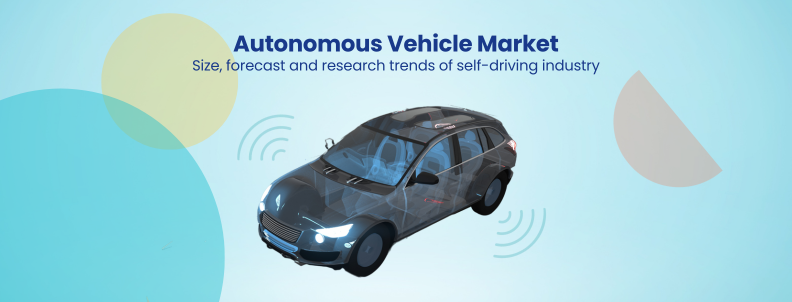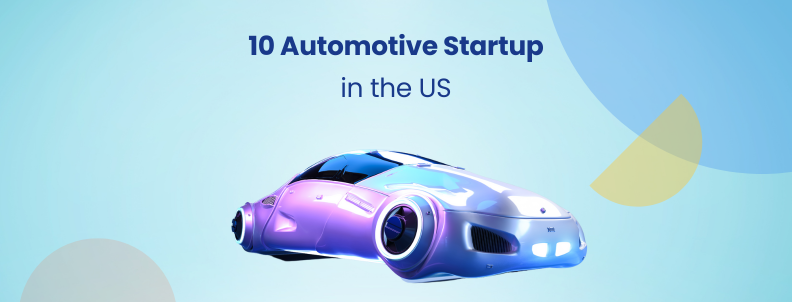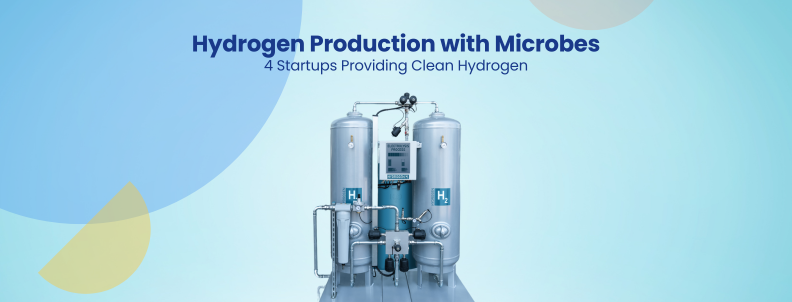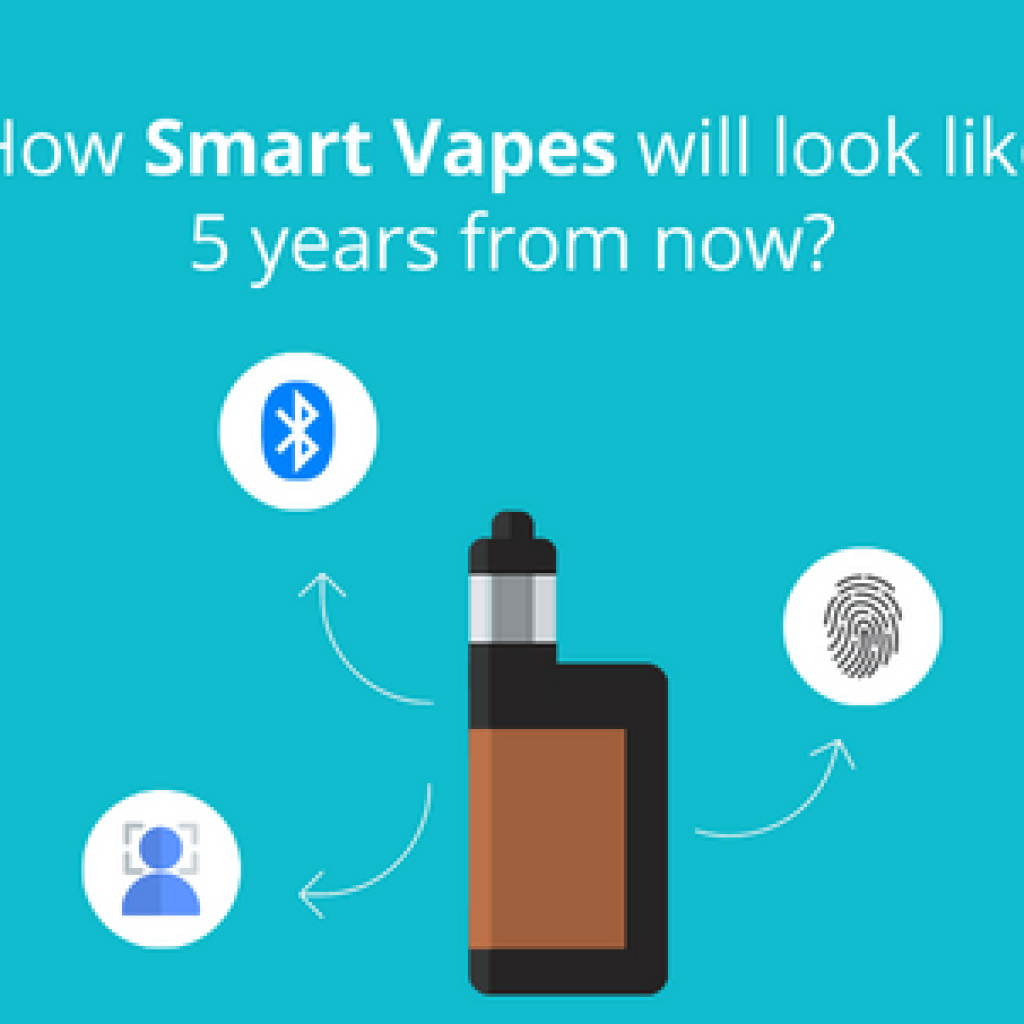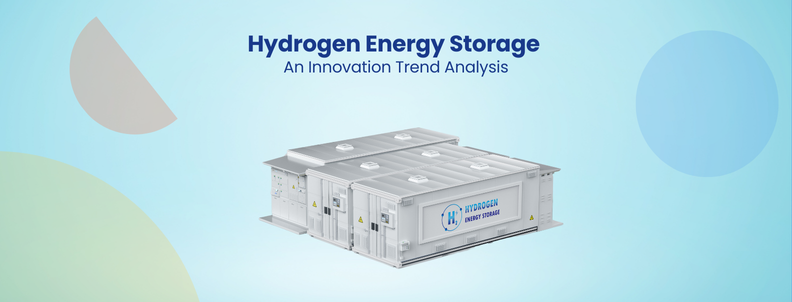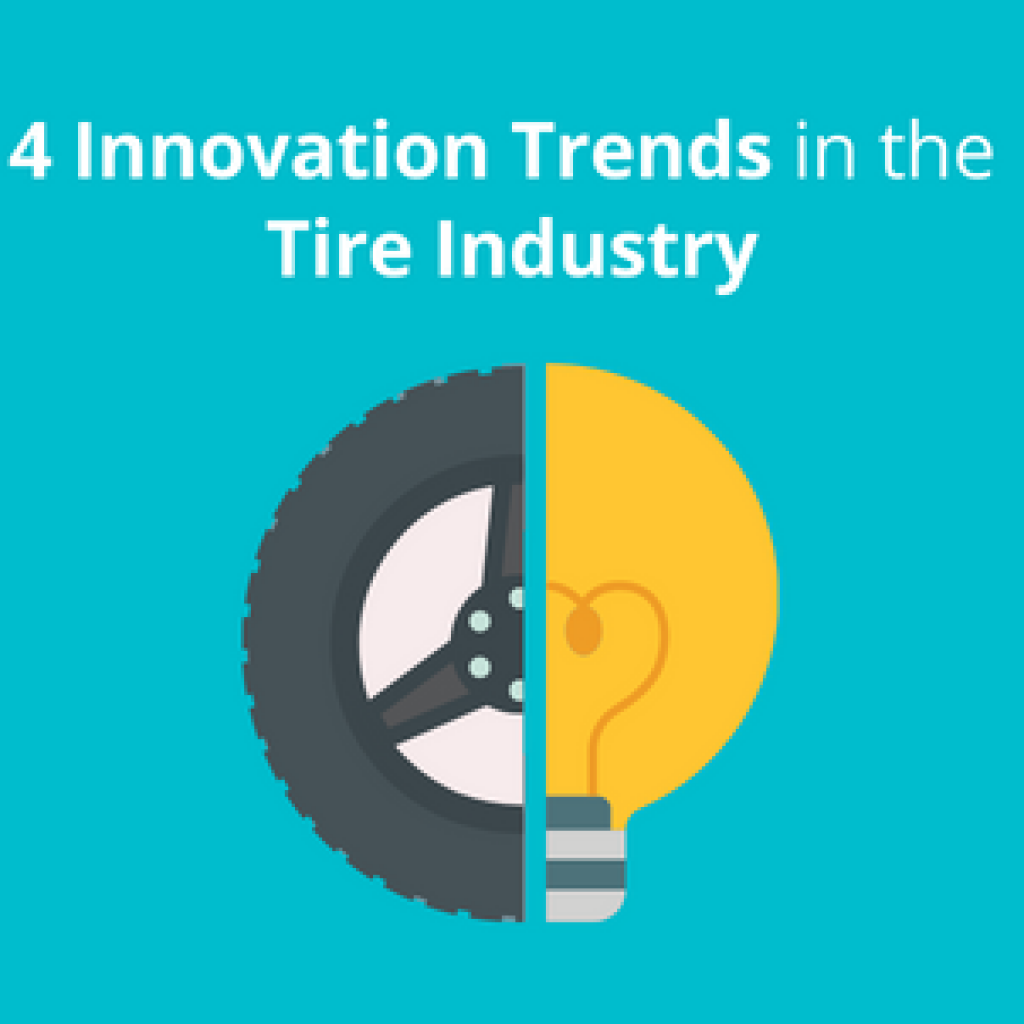We have come down to the final part of our 3-Part V2X Communication series. In the previous parts, we talked about the V2X market both in terms of C-V2X and WLAN-V2X and why the majority of companies are adopting C-V2X and the companies leading the V2X research, including both Cellular and WLAN-based connectivity.
This article discusses the noteworthy startups researching in V2X and how these can make good candidates for acquisition by major technology or automotive companies to gain an upper hand in the V2X research.
You might now ponder: All this is okay, but how do I choose the right startup for mergers and acquisitions?
To help you make the choice, we listed the top startups working in this domain, along with additional information like investment funding, acquisitions (if any), collaborations with big companies, and our favorite piece of information, i.e., patent analytics. This information can help you make an educated decision and choose the Right startup suitable for your needs.
V2X is an integral and rapidly growing domain of the modern Automotive industry. To stay ahead in this competitive market, companies should understand the market growth, innovation trends, and strategic opportunities present. Our detailed V2X market report can provide you with these insights.
This report also discusses key drivers fueling this growth, like the rise of connected cars, urbanization, and advancements in 5G and AI technologies.
Fill out the form below to get a copy of this V2X market report into your inbox:
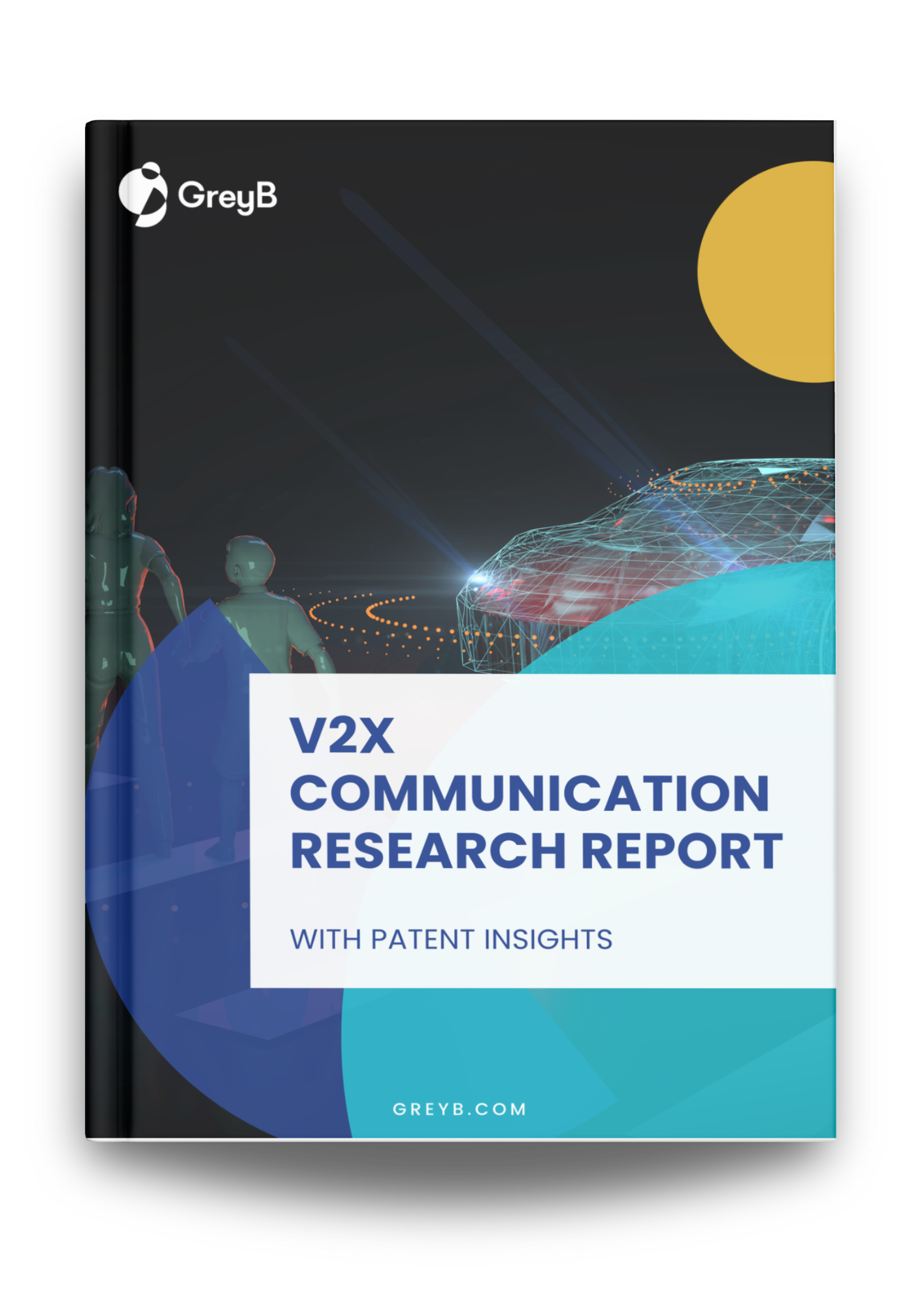
1. Autotalks
Founded in 2008, Autotalks is a fabless semiconductor company. The privately held company has strong financial backing from leading venture capital funds from Israel, Japan, and the US, including Gemini Israel Funds, Magma Venture Partners, Mitsui & Co. Global Investment, and Amiti Ventures. The company headquarters is in Israel, with local offices in North America, Germany, France, Spain, Sweden, Japan, and Korea.
Autotalks enables the vehicle-to-vehicle (V2V) and vehicle-to-infrastructure (V2I) communication revolution by providing OEMs, Tier1 and Tier2s comprehensive, automotive and commercial grade, standard-compliant V2X VLSI solutions at the highest performance and reliability. Autotalks brings strong semiconductors, systems, and software expertise with diverse experience in communications, signal processing, security, and positioning.
Investment Fundings
By April 2021, Autotalks has raised a total of $90 million over 3 funding rounds. The funding rounds were distributed as follows:
- In March 2017, Autotalks had raised $30 million in Series D funding to speed up the global deployment of V2V communication while improving road safety. This funding also helped Autotalks to expand its worldwide operations.
- In June 2017, Autotalks raised another $40 million in Series D funding. This funding allowed the company to prepare and expand its operations for mass production, continuing the development of communication solutions. These communication solutions were basically for both connected and autonomous cars.
- In May 2019, Autotalks raised $20 million from Nuvoton Technology. Nuvoton had acquired a 7.14% stake in Autotalks at a corporate valuation of $300 million.
There are a total of 13 investors who invested in Autotalks, but the top investors are Nuvoton Technology and Mirai Creation Fund. The other principal investors are Toyota Motor Corporation and Sumitomo Mitsui Banking Corporation. (Source)
Autotalks Patents
As of April 2021, Autotalks has 43 patents (19 patent families) in its portfolio (13 granted and 30 pending).

Most of these are US patents, followed by Europe and then WIPO.
 Collaborations
Collaborations
- In 2016, Autotalks and STMicroelectronics announced their fusion of the GNSS technology and V2X ranging. The ‘V2X-Enhanced GNSS’ ensured authenticated and secure vehicle localization for extreme accuracy and reliability of positioning information.
“Autotalks fully recognizes that autonomous driving requires equal measures of reliability, accuracy, and security and no driver would sacrifice any of these.”
– Hagai Zyss, CEO of Autotalks.
- In 2018, Autotalks collaborated with Hyundai to speed up developing and deploying the next-generation V2X chipset for connected cars. This technology helps to improve vehicles and road safety, and mobility and is important for autonomous driving. Hyundai has been expanding its partnerships to strengthen connectivity technology that is important to autonomous driving.
- In 2019, Autotalks and CEVA Inc. collaborated mainly to add C-V2X while supporting the CEVA-XC DSP-based Autotalks chipset. According to Amos Freund, VP of R&D at Autotalks, “Autotalks and CEVA have enjoyed a long and successful relationship, with their unique expertise in cellular and communication DSPs perfectly complementing our wireless know-how. The CEVA-XC DSP allowed us to quickly and seamlessly implement C-V2X support on our chipset in addition to DSRC, resulting in the world’s first and only truly secure global V2X solution.”
- In 2020, Autotalks collaborated with seven consortiums and five-car manufacturers, including Great Wall, Dongfeng, and Brilliance Auto. Autotalks has demonstrated the interoperability and conformity of its V2X solution to the latest Chinese C-V2X standard.
- In 2021, Autotalks partnered with the leading OEMs, Tier 1s, and test labs, including Toyota, Honda, Renault, Bosch, Continental, Valeo, and many other companies. It joined the SECUR project, which UTAC CERAM Millbrook coordinates to enhance the security of all road users. The SECUR project has set its goal to end the task of defining the V2X test procedure, which will function as the idea for the new safety rating by the EuroNCAP 2025.
2. Savari (Acquired by Harman)
Savari seeks to make the world’s roadways and vehicles automated and safer by deploying advanced wireless sensor technologies and software. Savari builds software and hardware sensor solutions for automotive car manufacturers, the automotive aftermarket, and smart cities. The company pioneered V2X radio technology, which is crucial for vehicles to achieve Level 4 and Level 5 of automation.
The technology allows vehicles to share data with other vehicles, traffic lights, and smartphones. With more than 150 man-years of V2X learning and development and 15 million-plus miles per year of public testing, Savari is a leader in V2X technology. Savari is headquartered in Santa Clara, California, and has offices in Detroit, Munich, Seoul, Shanghai, and Bengaluru.
Harman International, a subsidiary of Samsung, acquired Savari in Feb 2021.
Investment Fundings
By the time of its acquisition, Savari had raised a total of $20 million over 2 funding rounds. The funding rounds were distributed as follows:
- In January 2016, Savari raised $8 million in Series A funding. Delta Electronics Capital Corporation, SAIC Capital, and an undisclosed strategic investor were the various investors. Savari had used these funds to measure its software licensing while developing additional hardware. The company also expanded its operations to Europe and Asia.
- In April 2018, Savari raised $12 million in Series B funding. Aviva Ventures led the funding round. The other investors were SAIC Capital, Flex, and an undisclosed strategic investor. These funds were used to expand its global presence while integrating its industry-leading software solutions with cellular platforms.
There are around 4 investors of Savari, amongst which the lead investor is Aviva Ventures, followed by SAIC Venture Capital. The other investors include Flex and Delta Electronics, Inc. (Source)
Savari Patents
Despite being founded in 2008, Savari has only 9 patents (9 patent families) in its portfolio. And all 9 patents are granted by the USPTO. The startup filed its first patent in 2013, along with two other filings in the same year. In 2014 and 2015, it filed two patent applications each year, while the other two filed in 2017 and 2019.
Collaborations
- In 2016, Savari Inc. and Autotalks Ltd. announced that both partnered to provide a full suite of V2X communication solutions. These solutions were mainly for U.S. smart cities like New York City and Tampa. These joint solutions had leveraged a fully integrated software stack and applications, which enabled the three Wave 1 participant cities in the CV Pilot Deployment Program.
- In 2017, Savari and Econolite Group finalized their partnership agreement to speed up the development of advanced vehicle-to-infrastructure systems in support of connected and autonomous vehicles and Smart Cities. According to Gary Duncan, Econolite Group Senior Vice President and Chief Technology Officer, “The expanding development of connected and automated vehicles plus Smart City initiatives are placing greater importance on V2I capabilities. This partnership will help ensure we can quickly respond to and support the V2I needs of cities, planners, and transportation agencies.”
- In 2019, Savari Inc. and Rohde & Schwarz collaborated mainly for joint C-V2X interoperability testing. The collaboration prepared the future of interoperability tests as well as enabled automotive customers to set up their system testing environment quickly. These solutions covered 3GPP radio access layers for C-V2X Mode 4 and region-specific ITS protocol layers.
- In 2020, Savari and MobiledgeX strategically partnered to enable the enhancement of C-V2X for automotive OEMs, their fleet management, and mobility-as-a-service partners. Savari delivered mission-critical ADAS applications faster and with greater security and governance across globally distributed public and private 4G LTE and 5G networks.
- In 2020, Swift Navigation and Savari partnered mainly to bring precise positioning services to V2X applications for automotive OEMs and mobile operators. Even this partnership helped to foster and promote technology to improve position accuracy for V2X applications. In the future, it will create opportunities in automotive safety applications and traffic management while enhancing Advanced Driver Assistance Systems.
- In 2020, Savari Inc. and Accedian announced that both companies collaborated strategically to manage the service level agreements of operators for V2X. Mainly the partnership focused on delivering quality service to V2X edge applications. This helped an assured, attested, and forensically auditable solution for automotive OEMs and their fleet management and Mobility-as-a-Service providers.
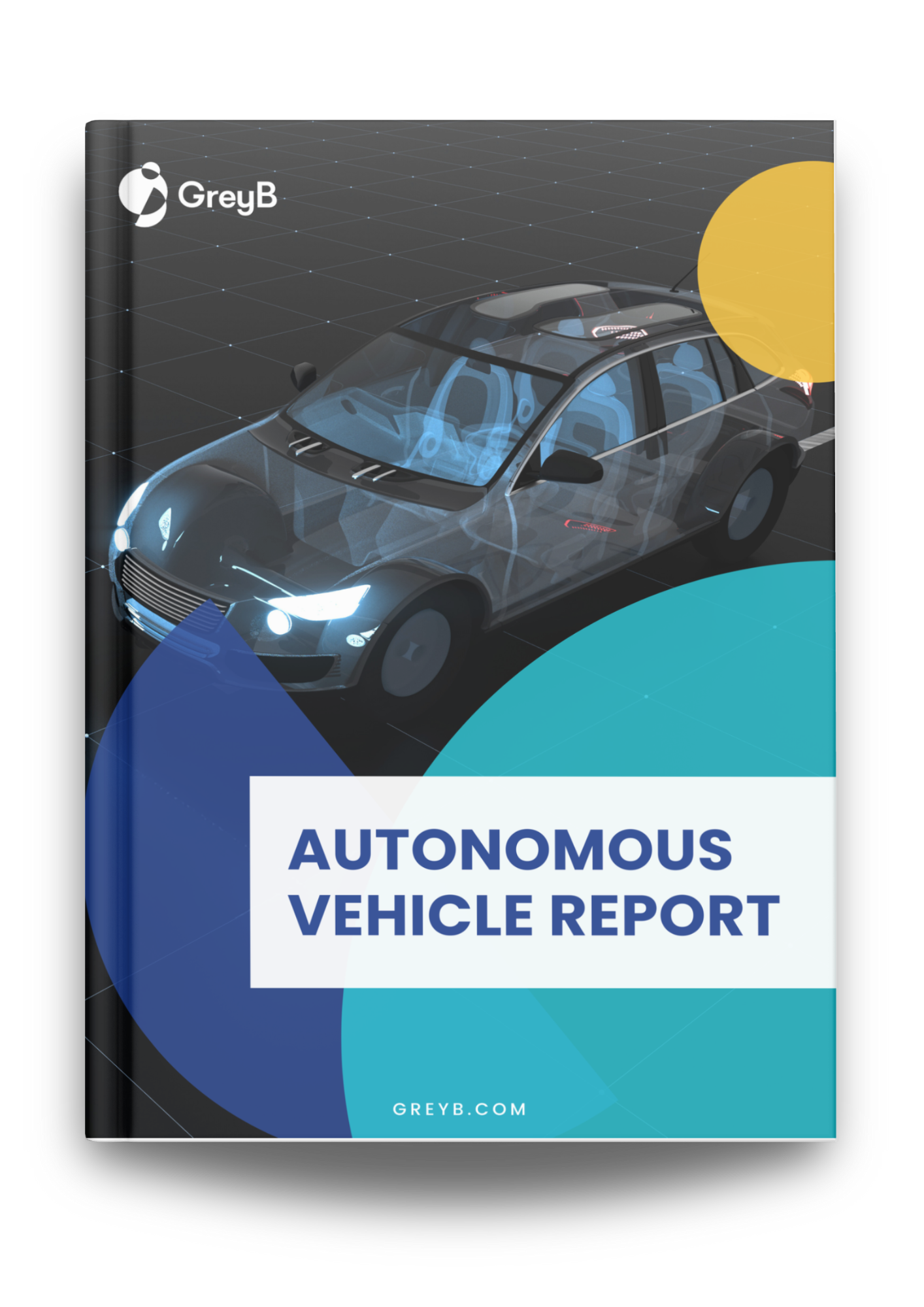
Autonomous Vehicle Market Report
Download The Report3. Valerann
Found in 2016 in Israel, Valerann is essentially a traffic management data platform that aims to make roads smarter by developing an end-to-end system installed on the road itself. Using different sensors, a unique algorithm, and a communication system tailored to the road’s unique requirements, the system provides real-time information to drivers and road operators. This includes danger recognition, instant accident prevention, optimal traffic flow adjustments, and autonomous car guidance and support. Valerann system provides all these solutions in one product.
Investment Fundings
According to Crunchbase, Valerann has raised a total of $5 million in two rounds of investment. The funding rounds were distributed as follows:
- In 2018, the company raised around $5 million in a Seed funding round.
- In 2018, the company received an undisclosed amount of grant.
The investors who funded Valerann were 2B Angels, Telefonica, Wayra, Rio Ventures, and Pitch@Palace. (Source)
Valerann Patents
Valerann has filed for 20 patents (5 families) till now. Out of those 20, 5 patents are granted. The startup has filed these patents in multiple jurisdictions.
 Collaborations
Collaborations
- In 2018, the smart studs, which resemble the conventional cat’s eyes used to demarcate routes, were created by Israeli startup Valerann, which conducted its first pilot run in an actual, congested environment with the assistance of highway operator Ayalon Highways Co.
- Valerann was accompanied by Globalvia at CES2020. Globalvia took part in the CES2020 edition with the Smart45 initiative, on which it worked with Valerann. This collaborative Smart45 project aimed to provide real-time updates to the control center and road users.
- Catapult assisted Valerann in accelerating their goals, accelerating the transformation of the intelligent transportation sector, and challenging the £52B Intelligent Transportation Systems segment. The Catapult assisted in the introduction of GPS into the foundations of Valerann’s scheme, allowing access to a sensory IoT traffic control system.
- In 2020, Valerann and Excelerate formed a consortium to use satellite systems to promote safer roads and accelerate the deployment of autonomous vehicles. It assisted Valerann in using satellite communications and GPS technology to make the system flexible and crucially available as an off-grid solution.
4. Cohda Wireless
Cohda Wireless is a leading developer of Safe Vehicle and Connected Vehicle design solutions and services for public safety, outdoor, and automotive wireless-based systems. Cohda has applied its significant patent portfolio and in-house skills to develop high-performance wireless designs on highly integrated, low-cost semiconductor chipsets.
Investment Fundings
According to PitchBook, Cohda Wireless had successfully raised around $3.8 million in two rounds of investment. The funding rounds were distributed as follows:
- In 2020, the company received a grant of $2 million.
- In 2006, the company raised approximately $1.8 million in a Series A funding round.
The Top investors who funded Cohda Wireless were Epicorp, M-Group, and SciVentures Investments.
Cohda Wireless Patents
Cohda Wireless has a good number of patents in its portfolio, i.e., 159 patents but the unique families are just 28. It also justifies that the startup has filed patents in multiple jurisdictions, with the US the top one.

Out of its 159 patents, only 50 patents are granted.

Collaborations
- In 2016, Cohda Wireless and Autotalks revealed their collaboration at the ITS World Congress 2016 in Melbourne. Cohda Wireless presented its V2X reference framework, which included the Autotalks PANGAEA platform and Cohda Wireless’ leading V2X applications. The demo showed interoperability on a range of safety applications between the Cohda MK5 platform and the Autotalks PANGAEA platform.
- In 2018, Cohda Wireless and Spirent Communications expanded their collaboration to enable testing of WAVE-DSRC vehicle-to-everything (V2X) applications. The collaboration gave the general public access to best-in-class V2X technology.
- In 2018, at Cisco Live Melbourne, Cohda and Cisco expanded on their partnership by demonstrating a V2X Edge & Fog Computing approach. This protects vulnerable road users from vehicle threats even in areas where GPS is not available.
- In 2018, DEKRA and Cohda Wireless collaborated in DEKRA’s connected car test area, which is part of the company’s global network for connected, autonomous, and electric driving. Cohda Wireless, for example, provides MK5 hardware and V2X software for use in the Malaga test area. DEKRA tested linked car situations with V2X beacons and safety software from Cohda Wireless, including forwarding crash alerts, heavy braking ahead, intersection collision warnings, and roadside infrastructure warnings.
- In 2018, Cohda Wireless released details about the porting of its V2X software stack on the NVIDIA DRIVE AI car computer, as well as the integration of V2X and surround vision goal classification. This improved vehicles’ ability to spot dangers outside line-of-sight, such as those at blind corners, over the crest of hills, and behind large vehicles.
- In 2019, Cohda Wireless and Sasken Technologies Ltd. announced a strategic technology collaboration to drive the implementation of V2X (vehicle-to-anything) in the connected vehicle space through cellular or DSRC (dedicated short-range communication) technologies. They collaborated to develop a full TCU (Telematics Control Unit) device reference design, which includes Sasken’s TCU software and middleware, as well as Cohda Wireless’ DSRC/C-V2X (cellular V2X) stack and applications.
- In 2019, Cohda Wireless announced that it would use its V2X platform on a proposed urban test-field site in Berlin, Germany. Cohda Wireless supplied its Mk5 onboard and roadside modules to Diginet-PS, an open research platform for wired and autonomous vehicle technology which has been set up in central Berlin. Cohda has demonstrated its positioning technology in the Diginet-PS site’s underground car park.
- In 2020, u-blox collaborated with Cohda Wireless to develop a cutting-edge V2X solution for the cooperative intelligent transportation market. Cohda’s industry-leading V2X platform stack embraces the u-blox V2X chip UBX-P3 for DSRC/802.11p networking.
- In 2021, Cohda Wireless and Qualcomm collaborated mainly to deliver Cohda Wireless’s new C-V2X turnkey solution for automakers and smart cities worldwide. The Qualcomm Snapdragon Automotive 5G and 4G platforms support the V2X software of Cohda Wireless. The V2X solution of Cohda Wireless supports two radio communications technologies globally.
5. Commsignia
Commsignia specializes in the research and development, manufacturing, and distribution of cooperative intelligent transportation systems. Its product line includes a V2X Communication Software Stack and Commsignia’s security stack implementation, Hybrid V2X/ADAS Safety Applications, a V2X Simulator, On-Board Units (OBU), and Roadside Units(RSU).
The company was founded in 2012 and is headquartered in Santa Clara, California.
Investment Fundings
By August 2019, Commsignia had raised a total of $11 million in a series of funding rounds. Its lead investors are Karma Ventures and Samsung Catalyst Fund. The other investors include Partech, Inventure, Credo Ventures, and Day One Capital. These funds were mainly to strengthen the R&D capabilities and customer engagements of Commsignia. (Source)
Collaborations
- In 2017, Commsignia, u-blox, and NXP collaborated to address the immense growing demand for reliable Vehicle-to-Vehicle (V2V) and Vehicle-to-Infrastructure (V2I) technology. This collaboration helped the three companies to deliver substantial time-to-market advantages and benefits to automotive customers with future-proof solutions. This speed-up the adoption of V2X technology by automotive manufacturers.
- In 2017, Commsignia partnered with Spirent Communications. This collaboration was because Spirent combined Commsignia’s V2X Software Golden Sample with Spirent’s TTsuite-WAVE-DSRC test system. While Commsignia used the Spirent TTsuite-WAVE-DSRC test system as a pre-certification tool for its Unplugged-RT V2X Protocol Stack.
- In 2018, Commsignia joined the 5G Automotive Association (5GAA) for helping to build the future of the C-V2X ecosystem. This helped Commsignia to join a group of global players within the communication and automotive industries. It intended to use its specialist V2X domain knowledge to help initiate communications solutions standards while creating interoperable products. These products will enable vehicles to be fully automated, making future mobility safer and more efficient.
6. HAAS Alert
HAAS Alert aims to build lifesaving mobility solutions to make vehicles and roads safer and smarter. Their vision is a connected, collision-free world where everyone gets home safely. HAAS Alert’s Safety Cloud service sends real-time digital alerts to drivers, connected cars, and autonomous vehicles via vehicle dashboards and infotainment systems, navigation applications, and smartphones to aid drivers earlier in making safer, smarter driving decisions.
Investment Fundings
By January 2021, HAAS Alert had raised a total of $2.3 million in its funding rounds. The funding rounds were distributed as follows:
- In 2016, HAAS Alert raised a fund total of $140K from Techstars in the Seed funding round.
- In 2017, HAAS Alert raised $1.2 million in its Seed funding round. The main investors in this round were NCT Ventures and Urban Us.
- In 2018, HAAS Alert received a fund of $1.1 million from the Department of Homeland Security. This fund allowed it to leverage input from active and retired first responders nationwide while improving its technology.
There are around 10 investors of HAAS Alert, amongst which the lead investor is TechStars. The other investors include TechNexus Venture Collaborative, Ride Ventures, Stacked Capital, NCT Ventures, Urban Us, Fontinalis Partners, Wakestream Ventures, and Right Side Capital Management. (Source)
Collaborations
- In 2018, HAAS Alert strategically partnered with Zenuity to enhance their respective automotive product offerings. The HAAS Alert Safety Cloud transmits and sends alerts to connected cars, mobile apps, and autonomous vehicles when they are close to responding to emergencies and other fleet vehicles. The collaboration with Zenuity allowed HAAS Alert to implement Zenuity’s expertise, technology, and business relationships in the automotive industry while also speeding up the adoption of the HAAS Alert Safety Cloud.
- In 2018, HAAS Alert partnered with REV Group mainly due to REV Group using HAAS Alert’s Safety Cloud. REV Group will use Safety Cloud service on E-ONE, Ferrara, KME fire apparatus, and AXIS Smart Truck Technology. The HAAS Safety Cloud lets first responders broadcast their route to nearby motorists through smartphone apps when emergency vehicles are nearby.
- In 2019, HAAS Alert collaborated with Science and Technology Directorate (S&T). This collaboration enabled send real-time digital alerts to the emergency response vehicles’ lights and sirens. The HA-5 device of HAAS Alert gets connected directly to any existing light bar on first responder vehicles. During an emergency, the device automatically sends real-time information to HAAS Alert’s ‘SafetyCloud’ platform, which alerts nearby drivers.
- In 2020, HAAS Alert partnered with the Towing and Recovery Association of America (TRAA) to improve the safety of towing professionals. The Safety Cloud of HAAS Alert enabled tow trucks and other first responder vehicles to send real-time digital alerts to drivers as they approach active incidents.
“We’re excited to be working with HAAS Alert and believe that Safety Cloud provides towers an effective layer of additional protection from approaching drivers, many of whom are simply not paying attention to the roadway.”
– Cynthia Martineau, Executive Director, TRAA.
7. Derq
Derq uses AI to power a real-time predictive analytics platform, helping eliminate crashes, save lives, and create safer and smarter roadways. It creates a unified view of all road users and predicts their movement 24/7, leveraging inputs from existing infrastructure and existing or easily deployable cameras and other sensors.
Its analytics platform feeds a live dashboard available to road owners and operators and sends alerts to connected vehicles and infrastructure through its patented V2X technology.
Investment Fundings
Derq has raised a total of $3.6 million in two rounds of investment. The funding rounds were distributed as follows:
- In 2017, the company raised around $1.5 million in a Seed funding round from Techstars Mobility Accelerator.
- In 2018, the company raised another $1.6 million in a Seed funding round from Techstars. (Source)
Derq Patents
Derq has only 19 patents (2 unique families) in its portfolio. Out of 19 patents, 4 patents are granted. Besides the 12 US patents, the company has filed 1 patent in Singapore, China, Europe, and Canada.
Out of 2 unique families, 1 family includes 16 patents titled “Early warning and collision avoidance”. Derq filed this patent in multiple jurisdictions, including WIPO.
With this invention, driver activity is tracked and modeled to predict and prevent a breach in traffic situations at intersections and provide early warning of potentially dangerous situations, which helps in collision avoidance.
The other family includes 3 patents titled “Enhanced Onboard Equipment”. The patent has been filed for the US and WIPO.
Collaborations
- On the sidelines of the 37th Gitex Technology Week 2017, SDO signed a Memorandum of Understanding with Derq, DSOA, and RTA for using cutting-edge artificial intelligence in traffic accident prevention. SDO joined hands with Derq to test the use of artificial intelligence (AI) technologies developed at the American Massachusetts Institute of Technology (MIT) to improve safety at crossings with overlapping traffic between automobiles and Dubai Tram.
- Derq was able to put its technologies to the test in a real-world environment thanks to a collaboration with PlanetM, which installed smart traffic signals in Detroit that can connect with CAVs.
- In 2018, MDOT (Michigan Department of Transportation) partnered with Derq, PlanetM, and FLIR Systems on a V2X (vehicle to everything) safety initiative in downtown Detroit. The partners chose this intersection because of its complex road dynamics and heavy traffic flow. To detect crashes, the project employed a mixture of visual and radar sensors, as well as thermal imaging devices, to track vehicle, pedestrian, and traffic light encounters. It then employed artificial intelligence algorithms to give vehicles and drivers up to two seconds of warning.
- During Intertraffic Amsterdam 2018, Derq demonstrated V2X technologies such as Intersection Safety and Vulnerable Road User Safety in cooperation with Siemens. Derq is 1 of only 4 startups chosen by Siemens and its investment arm Next47 to showcase at InterTraffic’s Innovation Area.
- In 2018, Derq partnered with Flir Systems to convey real-time risks to drivers at the Jefferson Avenue and Randolph Street intersection. Derq’s software tracked encounters between vehicle-to-infrastructure (V2I) and vehicle-to-pedestrian (V2P). Thermal imaging and combined visible/radar sensors from Flir Systems were mounted at the intersection to enable Derq to run its software applications and produce predictions.
- In 2019, Derq collaborated with DENSO’s Ohio Smart Mobility Ecosystem to Drive Safety Solutions. The smart mobility ecosystem was used to validate and deploy infrastructure technology, develop value-added mobility services, and collect previously untapped data, all of which are critical to improving road and pedestrian safety and minimizing travel times.
- At the Consumer Electronics Show (CES) 2019, Derq presented AI-based road safety applications using Qualcomm Technologies’ C-V2X technology. Derq collaborated with Qualcomm Technologies to demonstrate capabilities using the cutting-edge Qualcomm 9150 C-V2X chipset solution at Qualcomm Technologies’ automotive booth in Las Vegas.
- In 2021, Derq entered a multi-year distribution deal with Control Technologies Group (CT Group). Derq’s leading AI video monitoring tools for connected roads and vehicles, as well as traffic and safety insights, are deployed through CT Group’s extensive network in the US. The collaboration eventually brought together Derq’s forward-thinking innovators and CT Group’s existing veterans in the traffic signal industry.
Related Read
8. Foresight Autonomous
Foresight Autonomous Holdings Ltd is a technology company engaged in designing, developing, and commercializing sensor systems for the automotive industry. Through the company’s wholly-owned subsidiaries, Foresight Automotive Ltd. and Eye-Net Mobile Ltd., Foresight develops both “in-line-of-sight” vision systems and“beyond-line-of-sight” cellular-based applications.
Foresight’s vision sensor is a four-camera system based on 3D video analysis, advanced algorithms for image processing, and sensor fusion. Its Eye-Net Mobile’s cellular-based application is a V2X (vehicle-to-everything) accident prevention solution based on real-time spatial analysis of clients’ movement.
The company’s systems are designed to improve driving safety by enabling highly accurate and reliable threat detection while ensuring the lowest rates of false alerts. Foresight is targeting the Advanced Driver Assistance Systems (ADAS), the semi-autonomous and autonomous vehicle markets, and predicts that its systems will revolutionize automotive safety by providing an automotive-grade, cost-effective platform and advanced technology.
Investment Fundings
According to Owler and Crunchbase, Foresight Automotive has raised $18.8 million in total over three rounds of investment. The funding rounds were distributed as follows:
- In 2017, the company raised around $6.4 million from a Post-IPO Equity round.
- In 2018, the company raised around $6.9 million from a Post-IPO Equity round.
- In 2018, the company raised around $5.5 million from a Post-IPO Equity round.
- In 2019, the company raised around $1 million from an Equity round.
The top investors who funded Foresight Automotive were RH Electronics Ltd., Meitav Investment House, Psagot Investment House, and Harel Insurance Investments and Financial Services. (Source)
Foresight Automotive Patents
The company has 28 patents (8 families) in its portfolio. Out of 28 patents, it only has 2 granted patents. Most of the patents belong to Israel and Europe.
 Acquisitions
Acquisitions
In 2018, Tamda Ltd. and its majority shareholder, Ipax Issues Ltd., reached a merger agreement with Foresight Automotive. After the acquisition, Foresight transferred 100% of the subsidiary’s share capital to Tamda in exchange for nearly 74.49% of Tamda’s share capital as of the transaction’s closing date.
Collaborations
- In 2018, Foresight Automotive signed a non-binding MoU with an Israeli direct importer of many leading vehicle manufacturers. The deal includes the terms of selling Foresight’s Eyes-On System for aftermarket configuration and incorporation into the importer’s vehicles in Israel. Eyes-On is an advanced driver assistance system (ADAS) that senses a wide range of possible threats, including vehicles, pedestrians, bicycles, animals, and more, with near-zero false warnings.
- In 2019, Foresight Automotive entered into a multi-phase technological partnership agreement with a Chinese Tier One provider to build smart mobility technologies for the Chinese automotive industry, primarily for two Chinese vehicle manufacturers (OEMs). According to the contract, Foresight collaborated with the Tier One supplier to plan, produce, and commercialize automated safety solutions for implementation in Chinese OEM vehicles.
- In 2020, Foresight Automotive attended the University of Michigan’s TechLab at Mcity 2021 startup cohort, run by the Center for Entrepreneurship, to further improve the automotive vision technology for ADAS and autonomous vehicles. Foresight took part in the one-year program with a team of students from the University of Michigan’s technical departments, which centered on developing, demonstrating, and implementing key autonomous vehicle technology.
- In 2020, Eye-Net Mobile Ltd., a subsidiary of Foresight Automotive, began testing its Eye-Net Protect cellular-based V2X (vehicle-to-everything) collision avoidance solution with a multibillion-dollar multinational Japanese electronics corporation. The Eye-Net Protect V2X solution was created to protect the most vulnerable road users in real-time, such as pedestrians, cyclists, scooter drivers, and car drivers, by offering crash warnings where the road users do not have a straight line of sight.
- In 2020, Foresight Automotive became a part of NVIDIA Inception, an acceleration platform. In addition, Foresight continued its software integration activities with the NVIDIA DRIVE platform to aid in producing autonomous vehicles (AVs).
- In 2020, Foresight Automotive signed a contract with FLIR Systems Inc. Both companies collaborated technologically to improve the efficiency of FLIR Systems’ thermal cameras inside the QuadSight system to achieve the best results in extreme weather and lighting environments and establish automotive connectivity solutions.
- In 2020, Eye-Net Mobile Ltd concluded a partnership agreement with NoTraffic Ltd. NoTraffic built a novel and patented Autonomous Traffic Management Platform system that addresses today’s traffic issues while allowing traffic authorities to reap accessibility benefits. The network allows cities to intelligently enforce their traffic policies and work autonomously to optimize traffic flow, minimize congestion, prioritize various types of vehicles, and avoid collisions.
- In 2020, Eye-Net Mobile signed a distribution agreement with Cornes Technologies. As per the arrangement, Cornes Technologies facilitated and aided the integration of the Eye-Net cellular-based accident-avoidance solution suite in third-party devices and applications in Japan.
- In 2021, Eye-Net Mobile Ltd. signed a commercial partnership agreement with SaverOne. According to the agreement, the Eye-Net Protect system was incorporated into the SaverOne solution to provide an extra layer of safety and improve its ability to avoid accidents by alerting drivers about possible risks.
Related Read
9. Veniam (Acquired by Nexar)
Veniam is building the Internet of Moving Things. The company turns vehicles into Wi-Fi hotspots and builds city-scale vehicular networks that expand wireless coverage and collect terabytes of urban data. Veniam’s game-changing solutions are composed of hardware, software, and cloud components that deliver managed services to intelligent transportation systems in New York and Singapore, as well as in the world’s largest network of connected vehicles, which includes taxis, waste collection trucks, and the entire public bus fleet in Porto, Portugal, offering free Wi-Fi to more than 500,000 active customers.
The company was founded in 2012 and is headquartered in Mountain View, California.
Investment Fundings
Veniam has raised $26.9 million over two rounds of investment. The funding rounds were distributed as follows:
- In 2014, the company raised around $4.9 million in a Series A funding round.
- In 2016, the company raised around $22 million in a Series B funding round.
Veniam was funded by seven investors – Union Square Ventures, Cisco, Liberty Global Ventures, Caixa Capital, Orange Ventures, Yamaha Motor Ventures & Laboratory Silicon Valley, and Cane Investments LLC with two lead investors – True Ventures and Verizon Ventures. (Source)
Veniam Patents
The startup has the largest number of patents amongst all the V2X startups that we have mentioned in this article. With 348 patents (111 families), it has quite a good portfolio among which 115 are granted patents, which is a good grant ratio.

The startup’s major patents belong to the US and the other jurisdictions are highlighted in the chart below.
 Collaborations
Collaborations
- In 2016, Veniam partnered with Qualcomm to deliver seamless V2X Connectivity for the Internet of Moving Things turning vehicles into hotspots to create mesh networking.
- In 2018, Veniam and Bosch collaborated to develop a central unit focused on vehicle to everything (V2X) technology that allows connected vehicles to interact directly with one another as well as with traffic signals, roadworks, and pedestrian crossings, alerting all road users to possible dangers such as traffic jams and collisions.
- In 2018, Veniam and DENSO signed a Memorandum of Understanding to explore collaborative options for the connected vehicle industry. Veniam and DENSO explored the inclusion of Veniam’s intelligent data networking capabilities in DENSO’s Communication Management (DN-CM) systems, as part of their partnership. Veniam and DENSO collaborated to allow automakers to go beyond 4G LTE to maximize the use of all wireless interfaces in the vehicle, including Wi-Fi and V2X.
Future Outlook
V2X is a necessary solution not just for the self-driving industry, but also an important constituent for developing smart cities where a vehicle can be connected to everything. With the predicted market growth estimation and the number of working companies and startups in the technology, it can be said that the future outlook of V2X seems tremendously good.
If you are working in V2X already or want to invest in V2X, you would want to know more specific details than what is covered in this report. You would want answers to questions like:
- What are the other Chinese players leading the V2X research besides Huawei?
- Are other Chinese automotive companies researching V2X solutions?
- How does China’s lead in V2X affect the self-driving market?
- A list of 100 Startups researching in V2X
We can help you find answers to the above and more questions. Fill out the form below to connect with our experts today:
How Can We Help You?
Describe your challenge, and let our industry experts bring clarity with their skills that brought solution to many complex R&D and innovation challenges in the past

